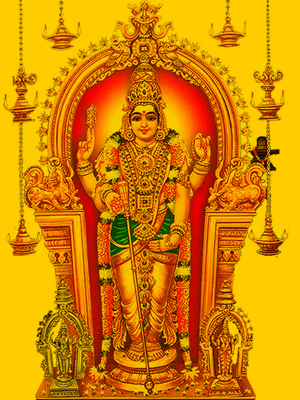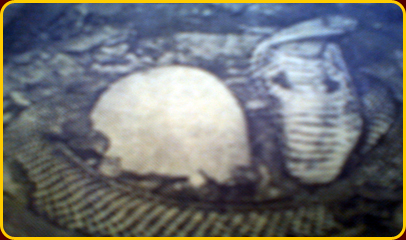



History of Temple
Strange are the ways of the divine that a mystery seldom remains beyond comprehension. A unique phenomenon occurred in the eastern outskirts of the village Alavelli Mallavaram, Gollaprolu Mandalam, East Godavari District in 1961.A cobra really divine in nature appeared in the temple land of lord kukkuteswara of Pithapuram, without touching anything or go away anywhere in spite of the provocations by the visitors, about a week after subrahmanya shashti.

People started coming from various places and nearby villages to see the divine cobra. Devotees used to offer cow milk, as it was a tradition in this part of country. According to Hindu texts, Lord kumaraswamy (son of Lord Shiva and Parvathi) is also called as Sri Subrahmanyeswara and prayed in Sarpa Roopa (As cobra).
Swamy (Cobra) used to take bath in nearby farm canals and stay on the same land despite the crowd of devotees. With contributions from the villagers, elders of the village started constructing a temple (10-2-1962). Next day morning, while moving at the site, swamy died at the same site of construction. After consultations with the Pandits and senior priests, on 12-2-1962 swamy was buried in the same place and sanctum sanctorum (Garbhalayam) was constructed on it.
An idol of subrahmanya swamy in Sarpa Roopa (As Cobra) was placed in the sanctum sanatorium along with Siva lingam and Ammavaru. At the time of construction on 25-11-1962, another cobra entered in to the site of the temple and started living there as of the earlier cobra. Swamy used to move around all the day and sleep in the back side of the temple in the night.
Construction of the temple was completed as per "Agama Shastra" ( A book on construction of temples).Special Poojas and rituals were performed from 31-1-1963 to 4-2-1963.Swamy used to enter the temple and sit on Siva Lingam and stay there for a long period of time. Devotees used to perform Abhishekam(Holy Bath) directly to the lord when he was on the Siva Lingam without any fear. This news was appeared in many leading news papers.
From then, many people from all walks of life started coming to Mallavaram to pray the lord and offered him precious ornaments and money. In the year 1964, in Subrahamnya Shasti celebrations, swamy died suddenly. That was a shock to the devotees and villagers. When Pandits and priests were contacted about this, they all expressed that, swamy liked this place very much as Mallavarm was once used to be the Agraharam and place for conducting Yagnas.
The above statement by the Hindu scholars was supported by Copper plate inscriptions of Paranthaka (1111-1118 A.D).These copper plates were found exactly in the very point, one foot below, while digging the earth some years later in 1965.they were sent to director of archeology and museums, Andhra Pradesh. They were entrusted to Dr.N.Ramesan, I.A.S, and then finance secretary of the government for Editing. He took keen interest and great pains to decipher the script for which he was awarded the degree by Poona University. This work published as book title as "Studies in medieval Deccan History" by the director of Archeology, Andhra Pradesh.
The copper plates are 17 in number fastened to a circular ring with an emblem seal of the general chola royal family. The history of the Cholas and battles fought was described in the plates. Veera Chola ruled Vengi kingdom for 24 years from 1086AD to 11 AD. During his reign, the original grant of Alavelli Nilayam ( Veera Chola Chathurvedi Mangalam) is given to 580 south Indian Brahmins. Details of the grant and date (1038 AD) were written on the copper plates. The Brahmins used to perform Yagnas, Yagas and other rituals as per the sastras for peace and Prosperity. Apart from the history of cholas and importance of eastern chalukyas, the inscriptions shows the tenure and social fabric of the village and detailed survey of agraharam to a tank ,tree, marsh, bush and even a foot path etc.
To conclude the whole area and atmosphere was sanctified with Nitya agni hotras, Vedic Chants, Yagnic Performances, Adhyathmic discourses, Pouranic Pravachanas and upanishadic recitations that echoed, reechoed and reverberated throughout.
Mahatmas say that Nirguna Nirakara Brahmam Chose to give darshana as lord subrahmanya in the guise of a divine cobra chose this holy place as his abode to protect the earth, bhakthas and vedas.
Photos of plates:
The deity is particularly known to bless childless couples with children. Upanyasa Chakravarthi, Brahmasri CHAGANTI KOTERSWARA RAO Garu referred this aspect periodically in his discourses.

Nijaroopa Darsanam 1961-64







